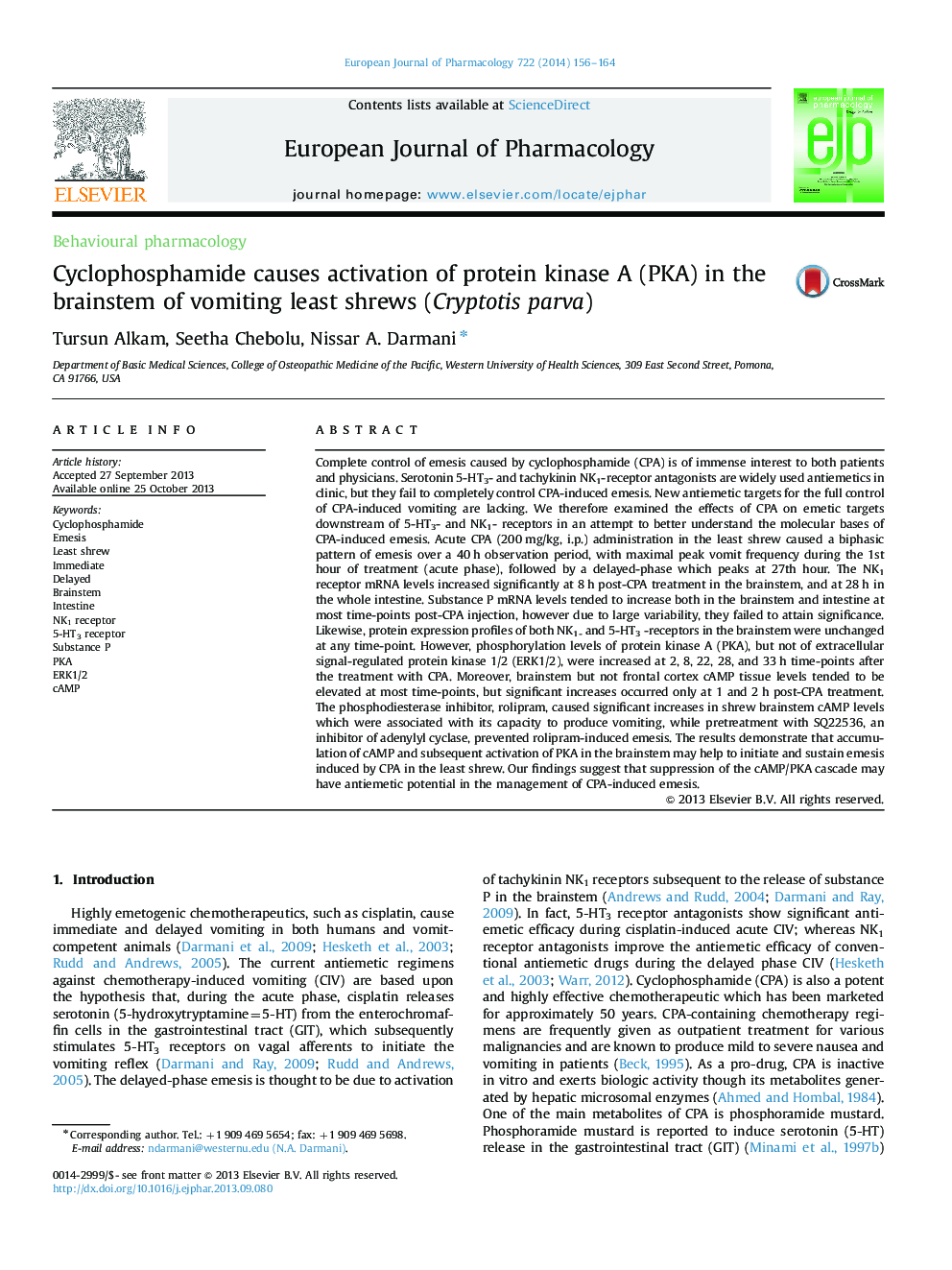| کد مقاله | کد نشریه | سال انتشار | مقاله انگلیسی | نسخه تمام متن |
|---|---|---|---|---|
| 2531876 | 1558959 | 2014 | 9 صفحه PDF | دانلود رایگان |

Complete control of emesis caused by cyclophosphamide (CPA) is of immense interest to both patients and physicians. Serotonin 5-HT3- and tachykinin NK1-receptor antagonists are widely used antiemetics in clinic, but they fail to completely control CPA-induced emesis. New antiemetic targets for the full control of CPA-induced vomiting are lacking. We therefore examined the effects of CPA on emetic targets downstream of 5-HT3- and NK1- receptors in an attempt to better understand the molecular bases of CPA-induced emesis. Acute CPA (200 mg/kg, i.p.) administration in the least shrew caused a biphasic pattern of emesis over a 40 h observation period, with maximal peak vomit frequency during the 1st hour of treatment (acute phase), followed by a delayed-phase which peaks at 27th hour. The NK1 receptor mRNA levels increased significantly at 8 h post-CPA treatment in the brainstem, and at 28 h in the whole intestine. Substance P mRNA levels tended to increase both in the brainstem and intestine at most time-points post-CPA injection, however due to large variability, they failed to attain significance. Likewise, protein expression profiles of both NK1- and 5-HT3 -receptors in the brainstem were unchanged at any time-point. However, phosphorylation levels of protein kinase A (PKA), but not of extracellular signal-regulated protein kinase 1/2 (ERK1/2), were increased at 2, 8, 22, 28, and 33 h time-points after the treatment with CPA. Moreover, brainstem but not frontal cortex cAMP tissue levels tended to be elevated at most time-points, but significant increases occurred only at 1 and 2 h post-CPA treatment. The phosphodiesterase inhibitor, rolipram, caused significant increases in shrew brainstem cAMP levels which were associated with its capacity to produce vomiting, while pretreatment with SQ22536, an inhibitor of adenylyl cyclase, prevented rolipram-induced emesis. The results demonstrate that accumulation of cAMP and subsequent activation of PKA in the brainstem may help to initiate and sustain emesis induced by CPA in the least shrew. Our findings suggest that suppression of the cAMP/PKA cascade may have antiemetic potential in the management of CPA-induced emesis.
Figure optionsDownload high-quality image (149 K)Download as PowerPoint slide
Journal: European Journal of Pharmacology - Volume 722, 5 January 2014, Pages 156–164